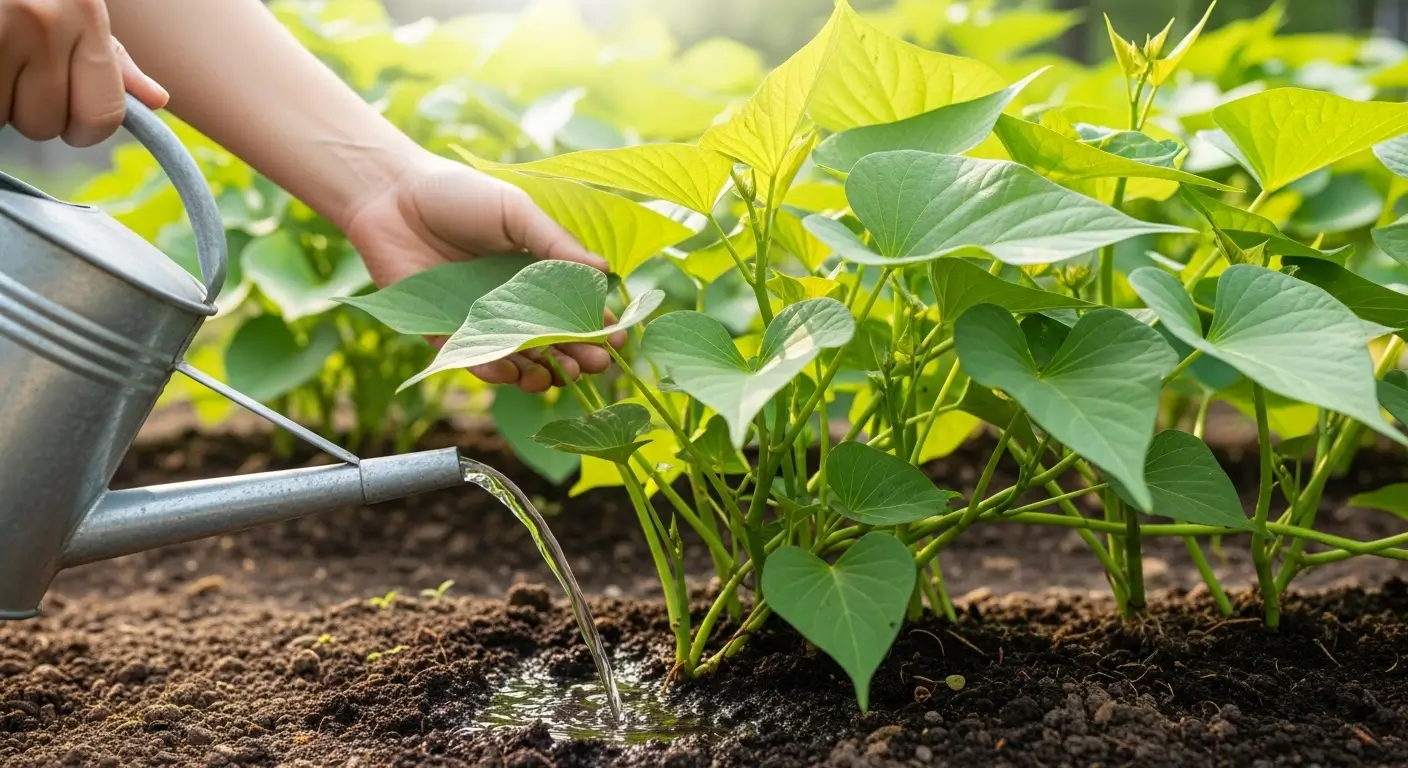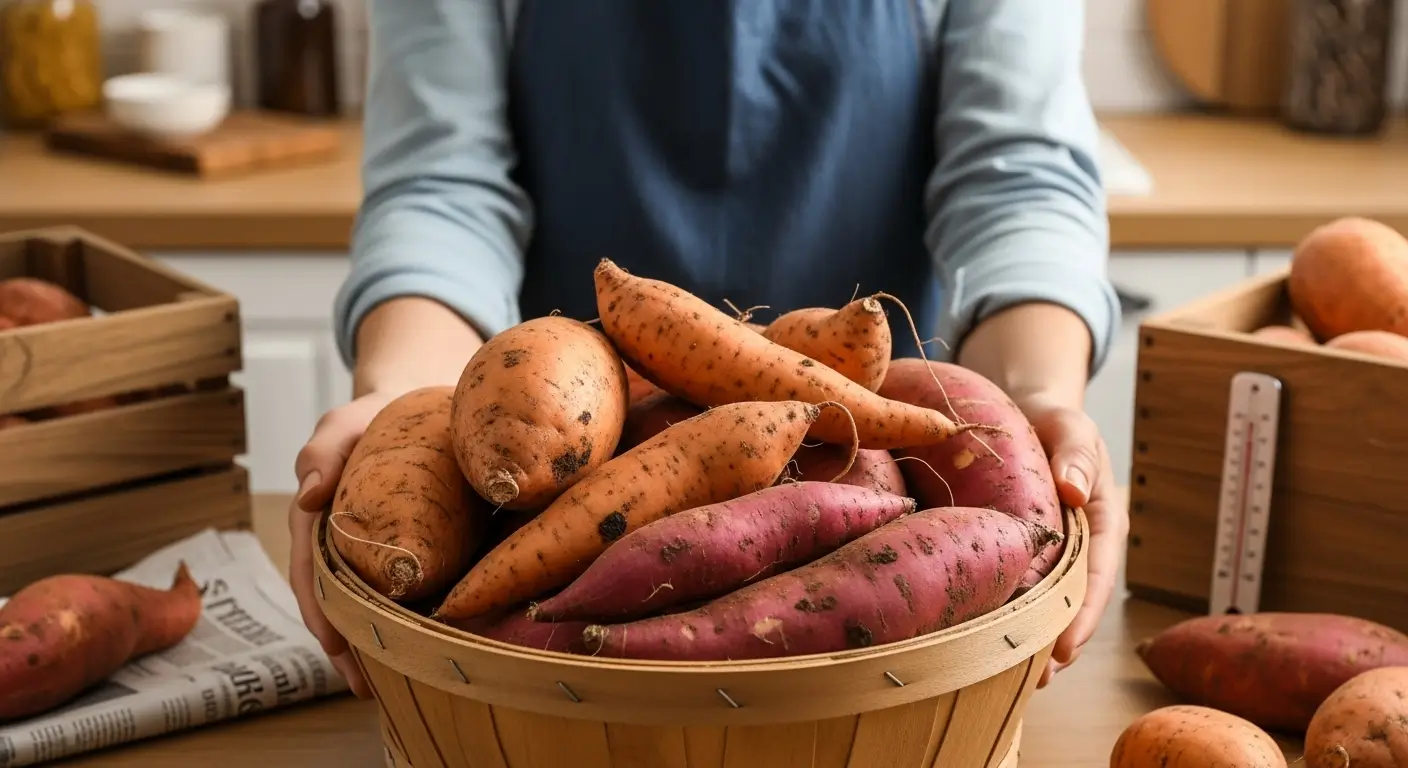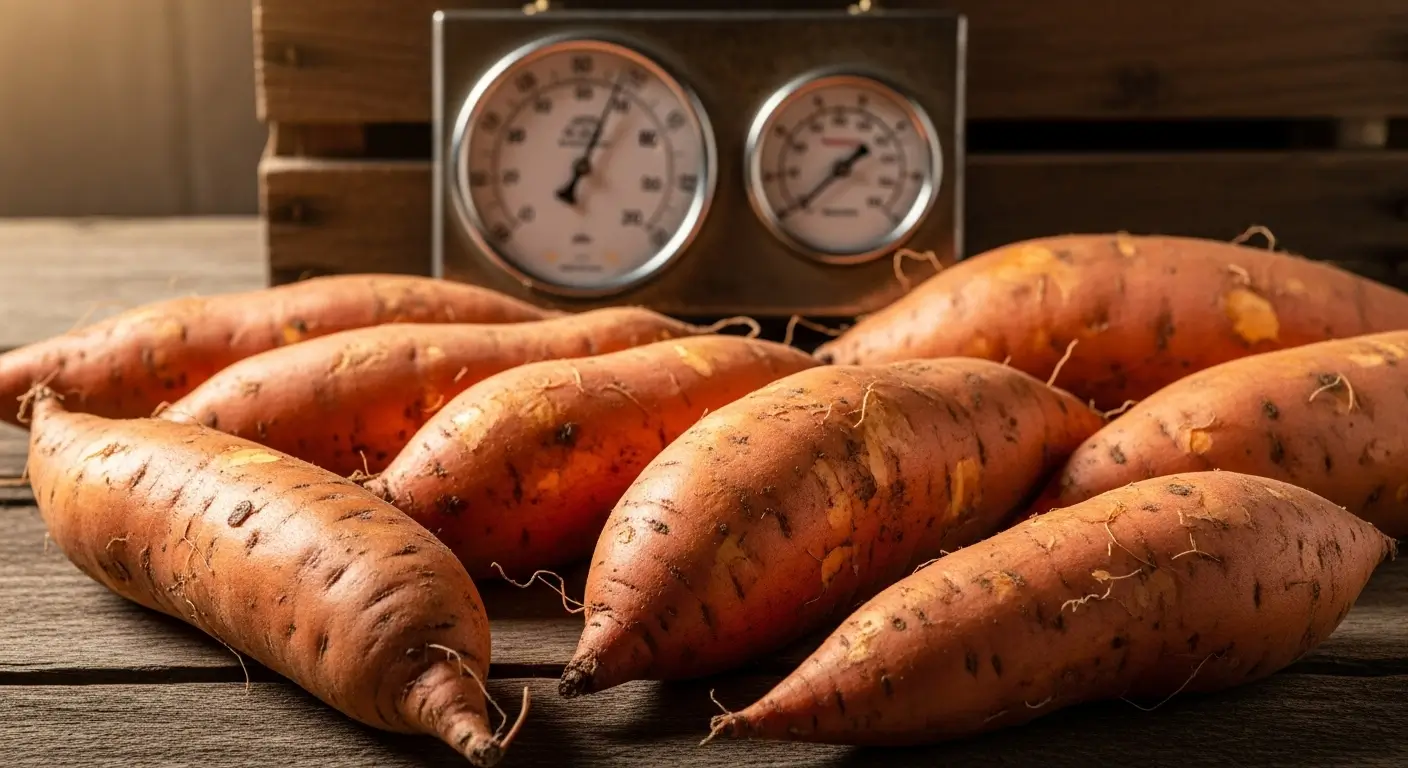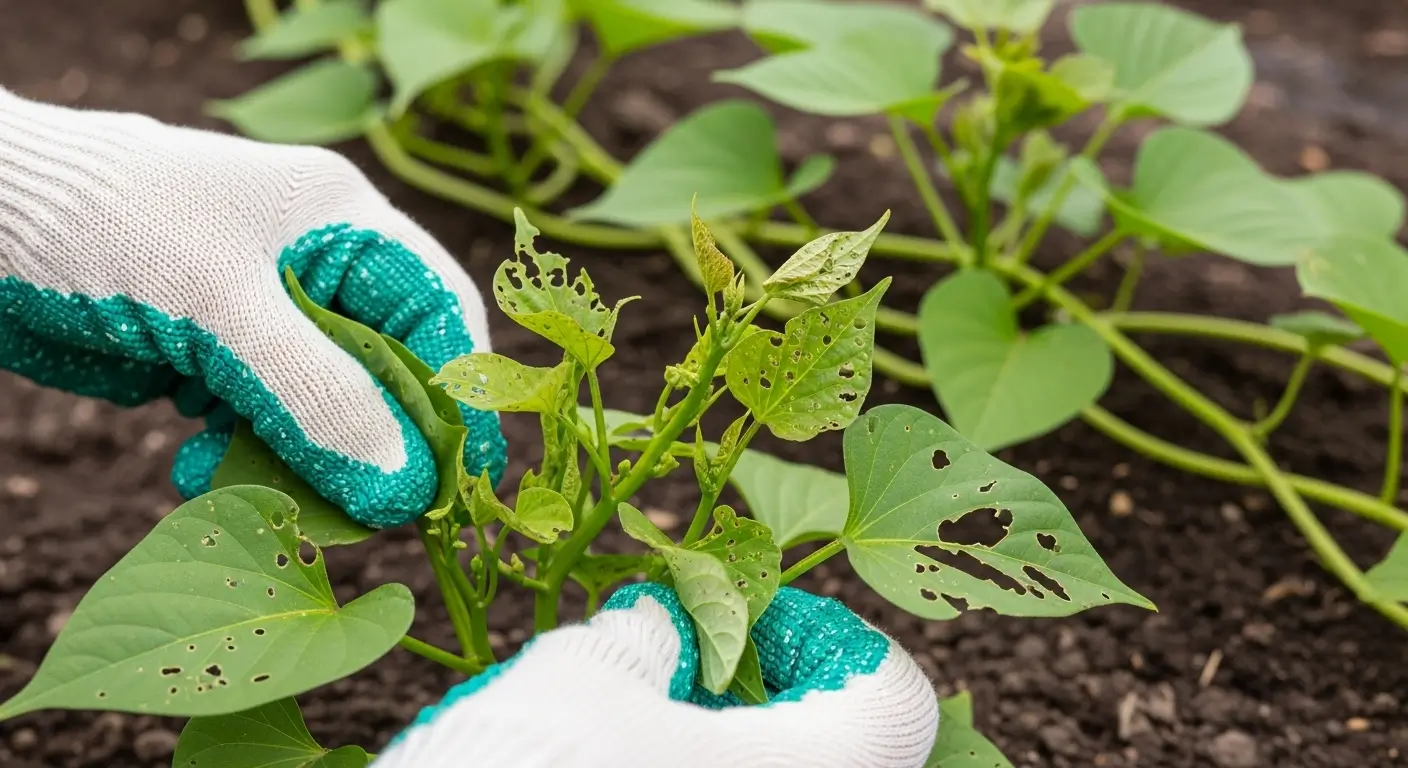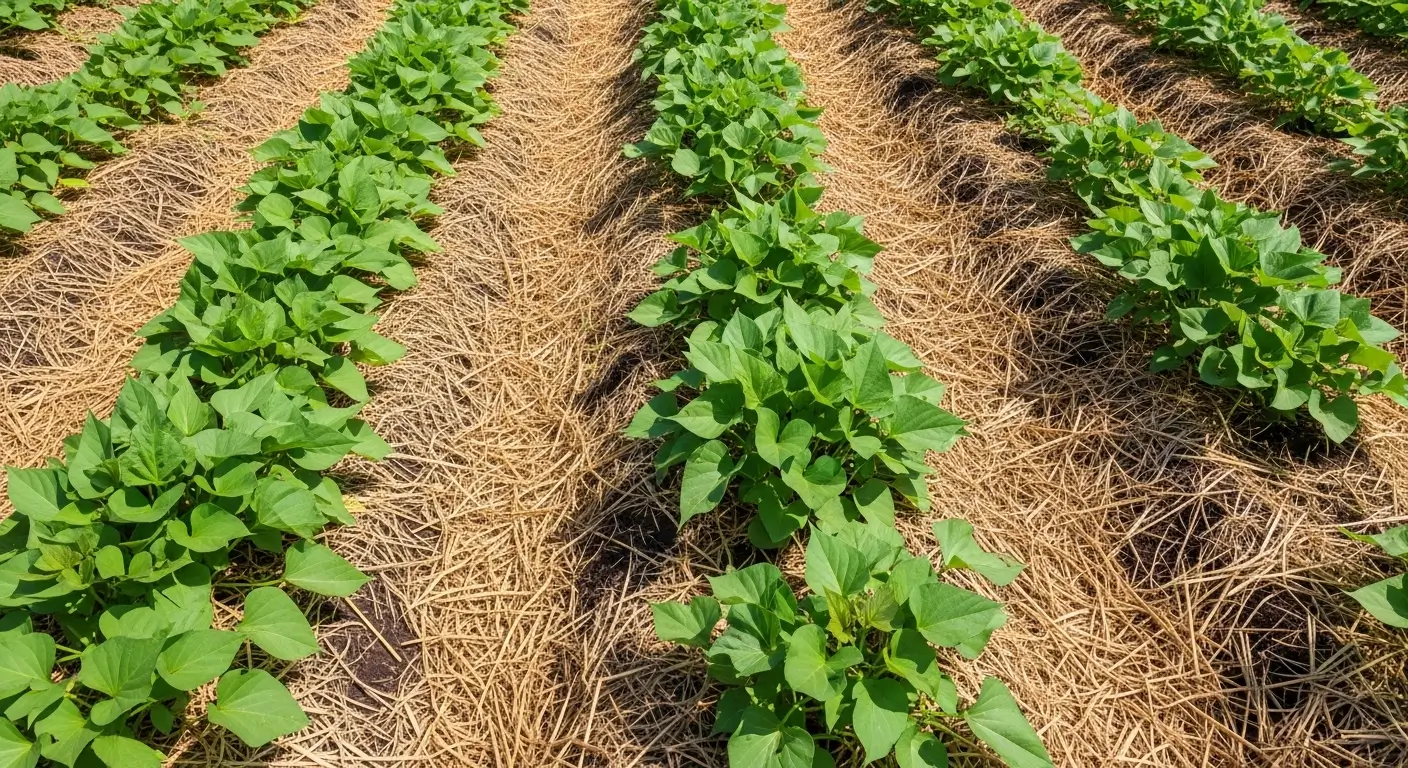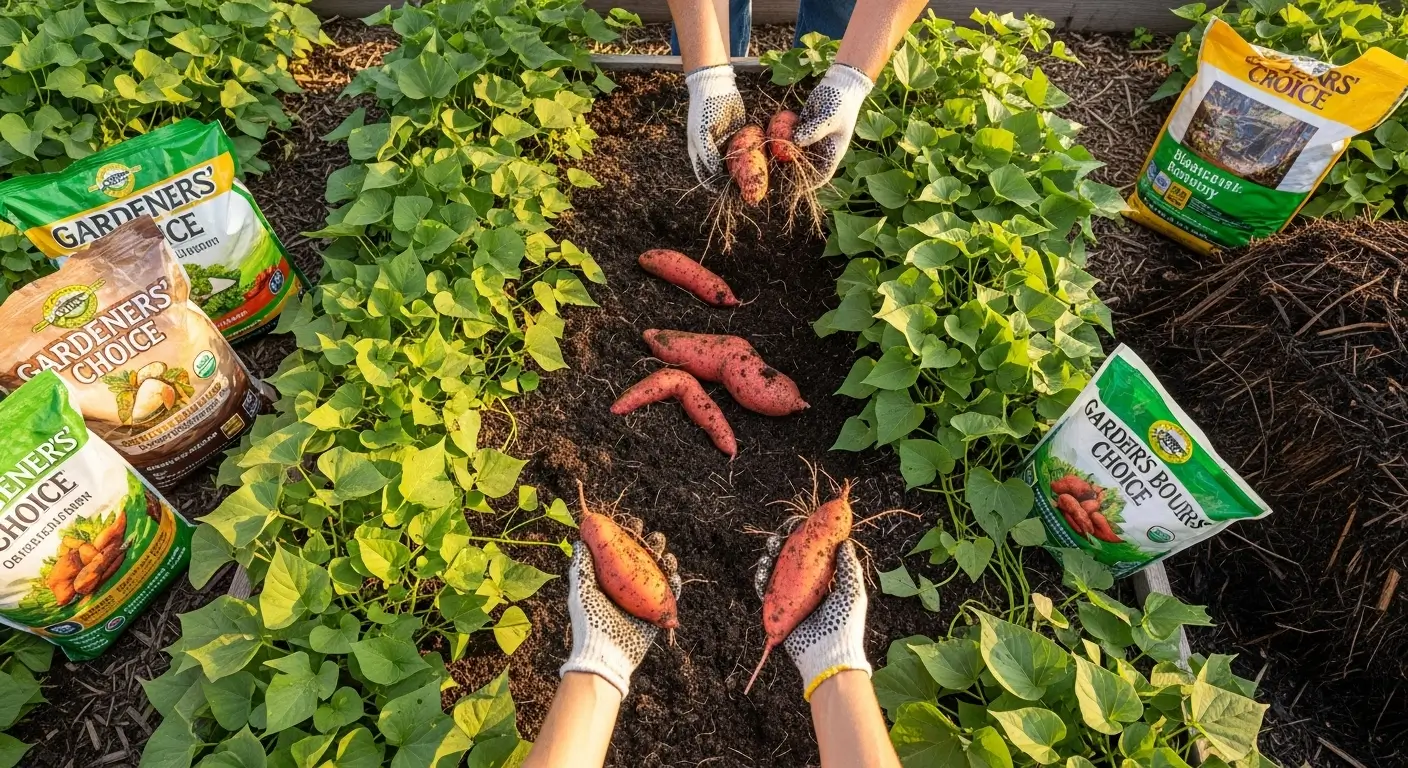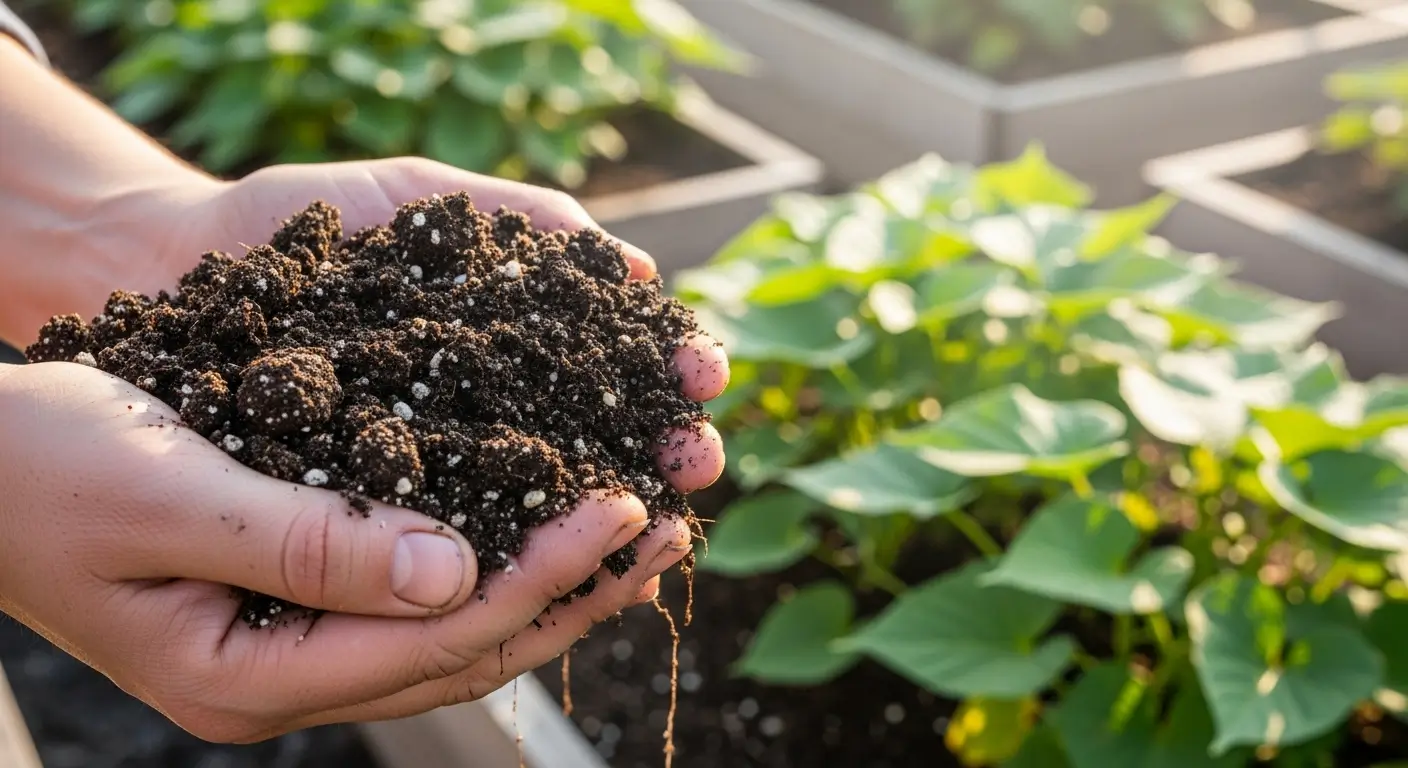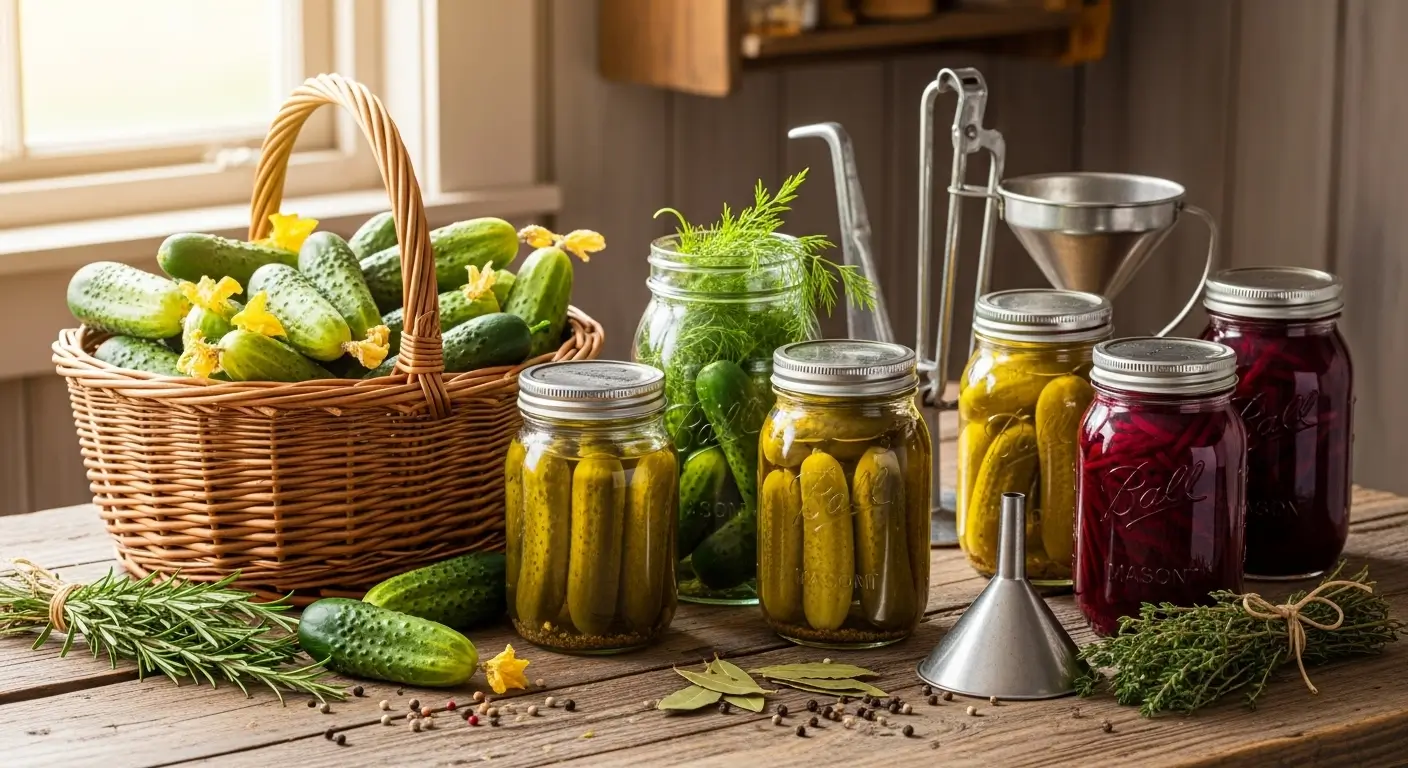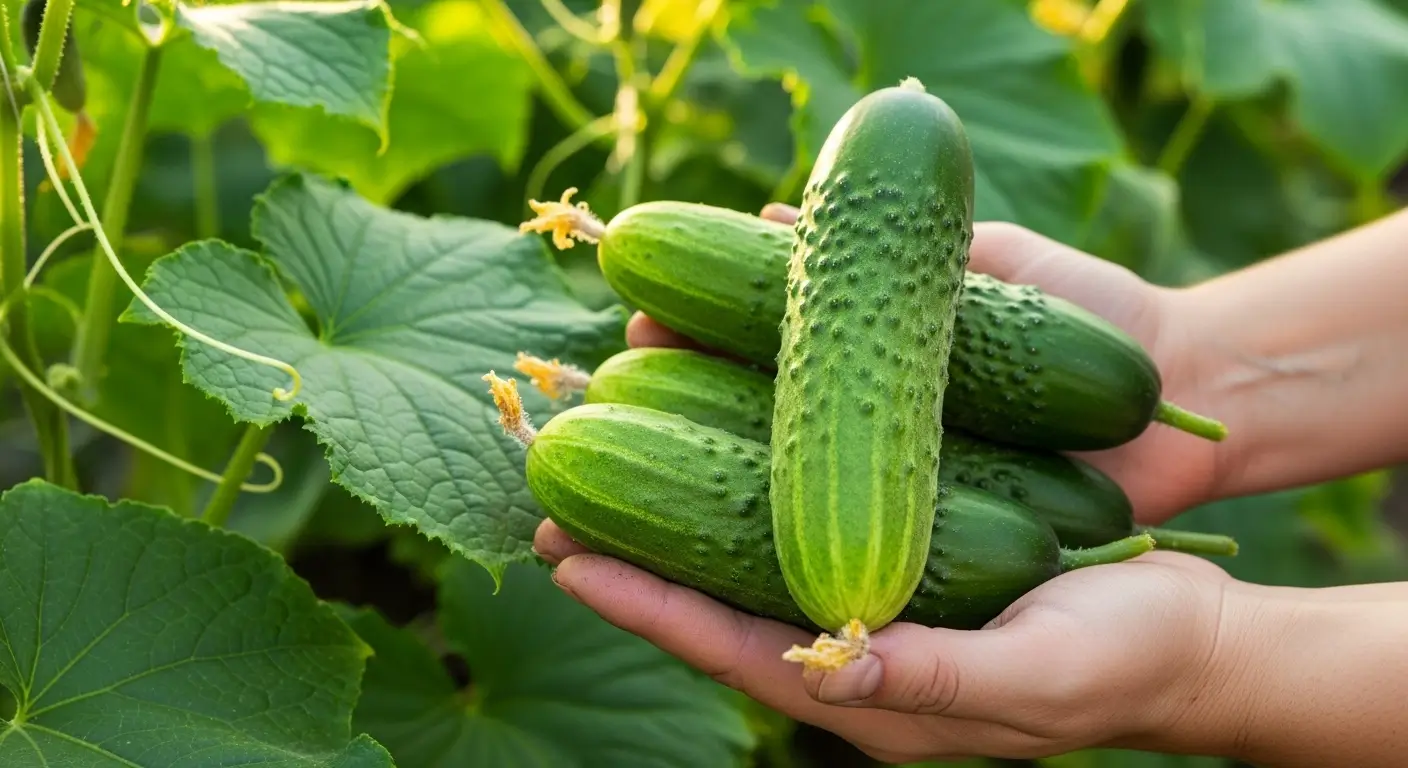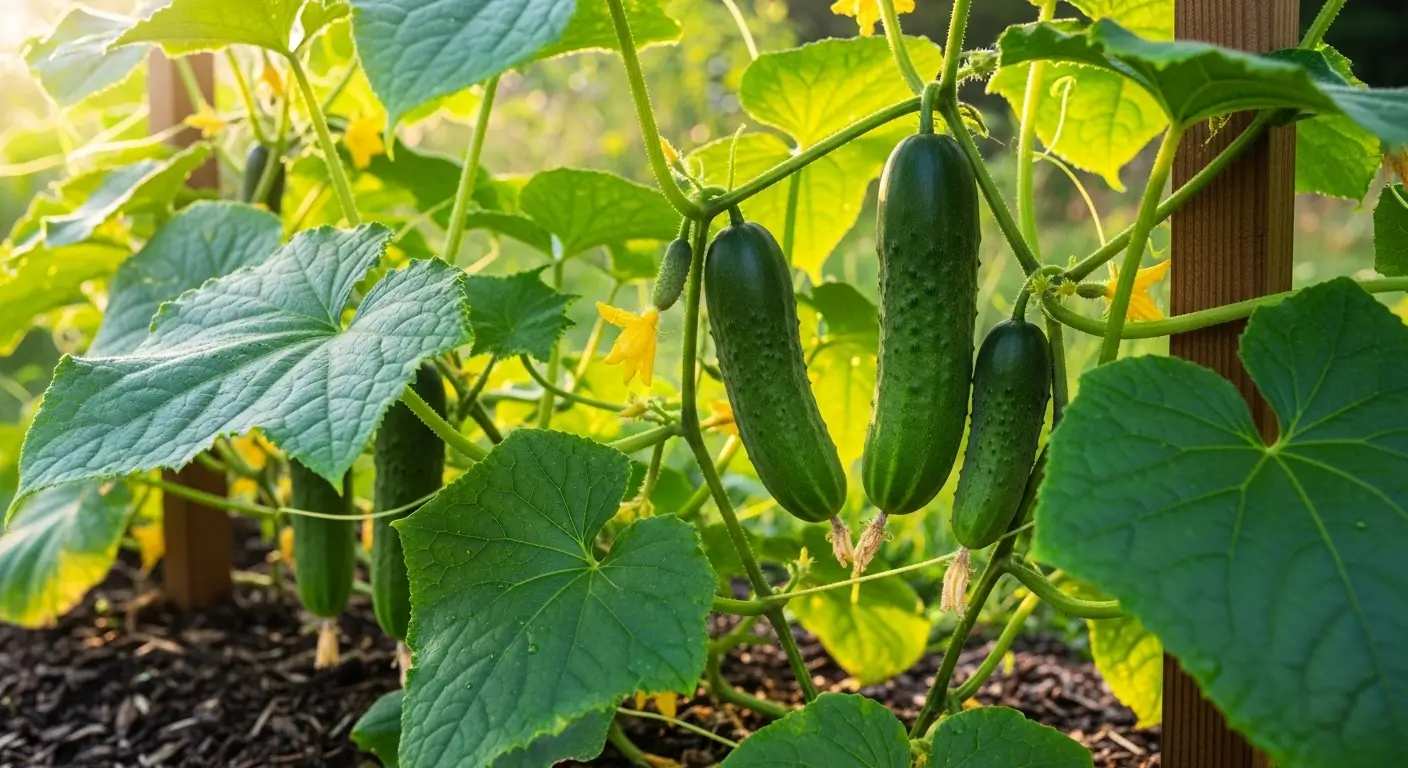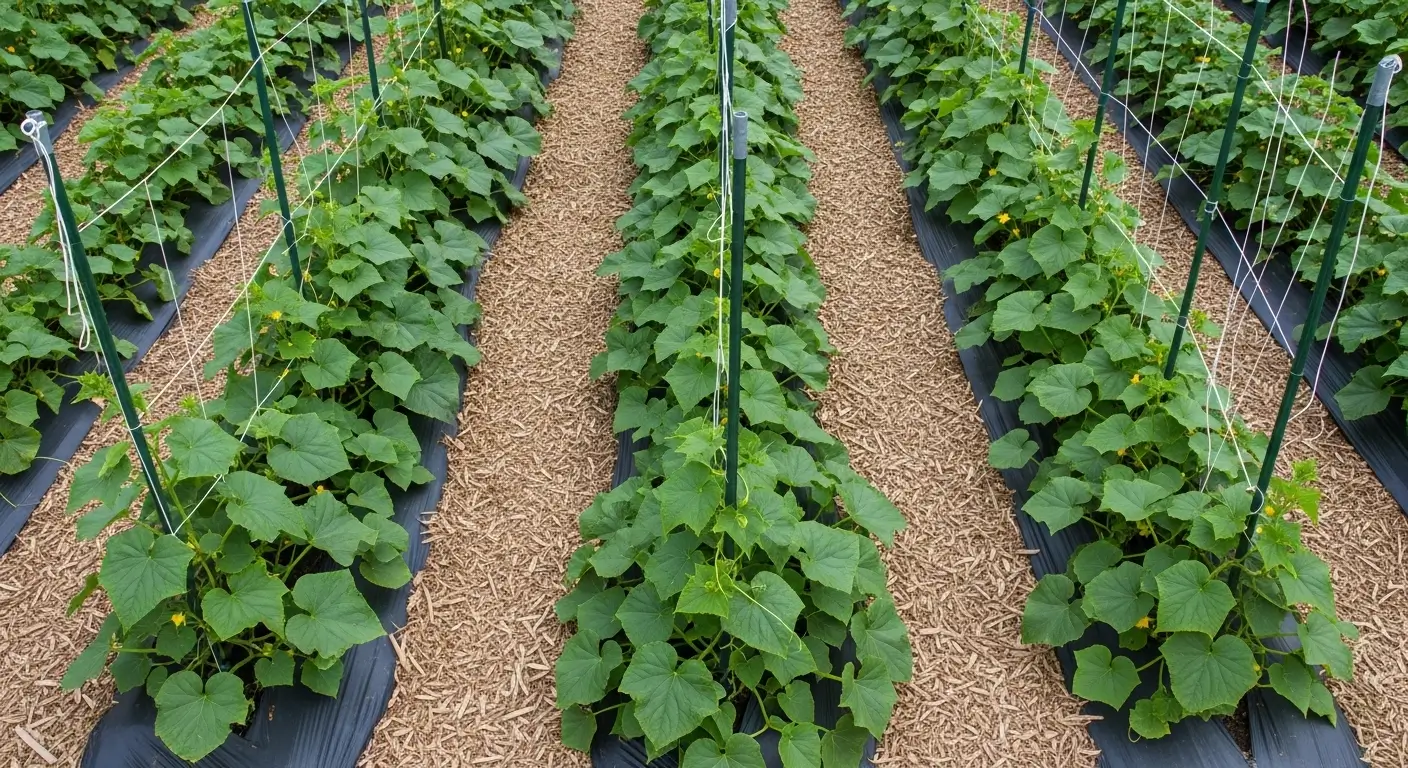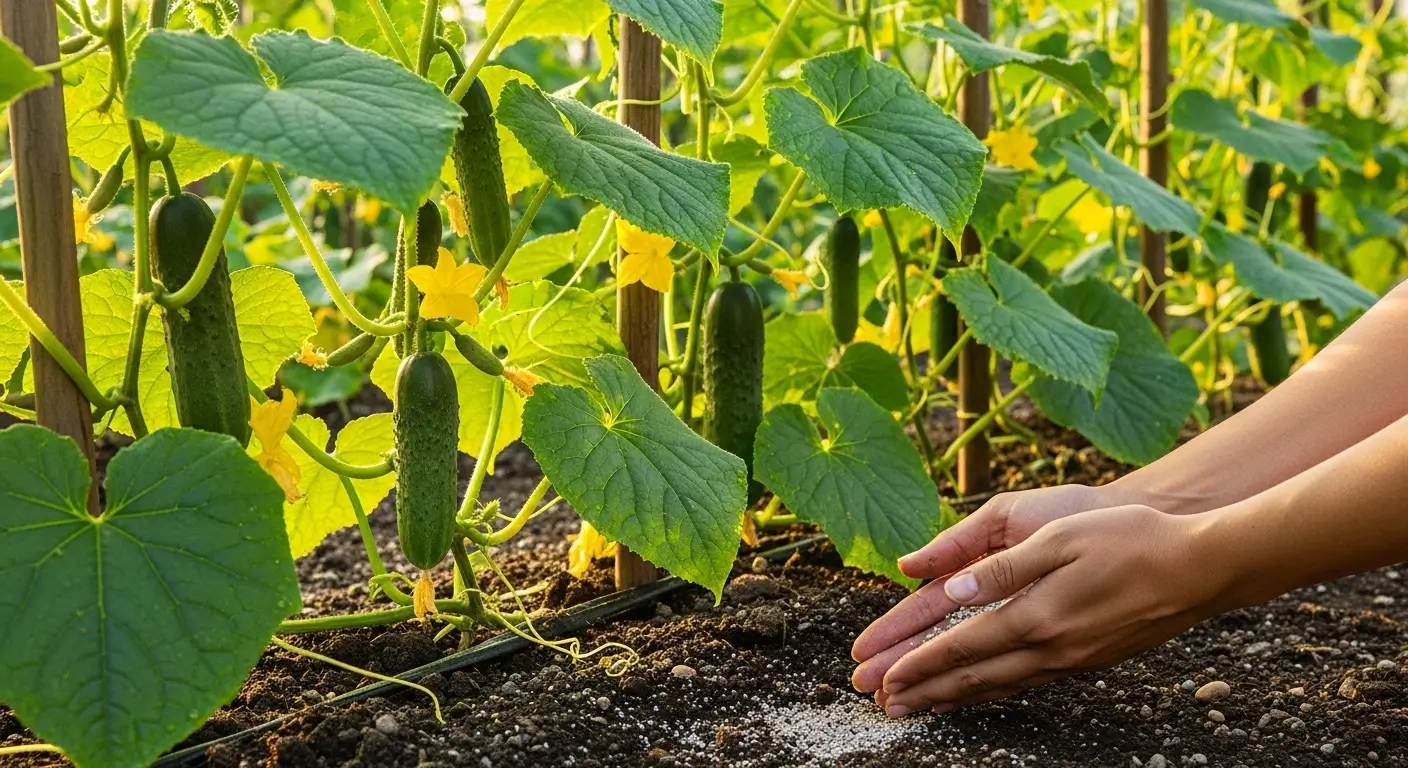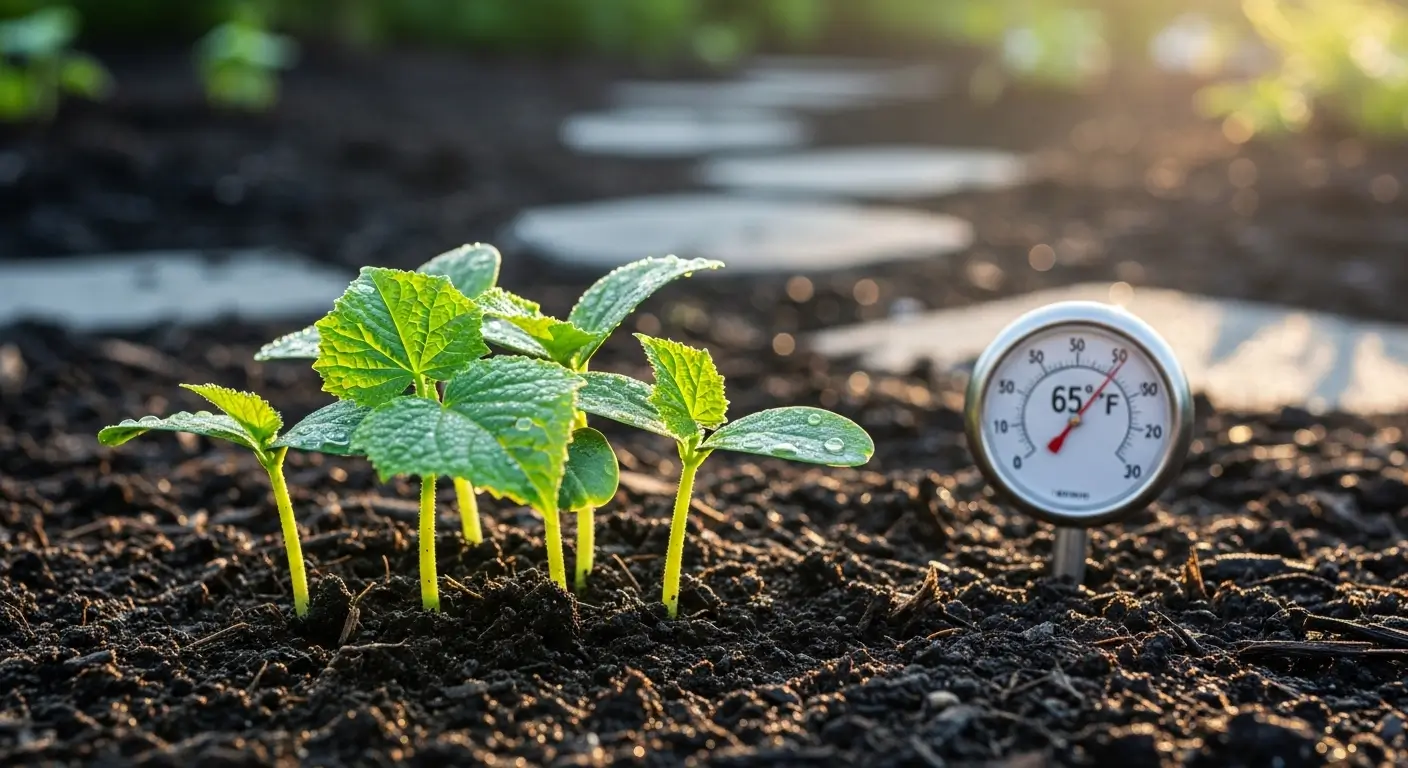Creating the perfect sweet potato watering schedule can feel like solving a mysterious puzzle, especially when standing there with your watering can, wondering if you’re drowning your plants or letting them shrivel up. Trust me, I get it—I’ve been that overthinking gardener!
Look, I’ve been perfecting my sweet potato watering schedule for over 15 years now, and let me tell you—I’ve made ALL the mistakes. Like, seriously embarrassing ones. But hey, that’s how we learn, and now I’ve got this whole watering routine down to a science.
Here’s what nobody tells you: sweet potatoes are like that chill friend who seems super easygoing but actually has some specific quirks. Nail their watering routine, and they’ll give you these excellent, Instagram-worthy tubers. Mess it up? Well, my compost pile has seen some sad, sad sweet potato casualties.
Table of Contents
What You’ll Learn in This Guide
- How much water do these babies want (hint: probably way less than you think!)
- My tried-and-true watering schedule that actually works
- How to spot when you’re either a helicopter parent or totally neglecting them
- Why does it matter when you water, more than how much
- The irrigation tricks that’ll make your life so much easier
Ready to become a sweet potato watering wizard? Let’s do this!
Understanding How Much Water Sweet Potatoes Need
So here’s the plot twist that blew my mind when I started growing these things—sweet potatoes are actually pretty tough cookies for drought. I mean, who knew, right?
I used to baby them like I do my drama queen tomatoes, watering every day like my life depended on it. Spoiler alert: that was a terrible idea. My plants looked like they belonged in a tropical rainforest, but my harvest? Let’s say “pathetic” would be generous.
Sweet potatoes want about 1 to 1.5 inches of water per week, rain included. Turns out the gardening experts at Iowa State University Extension back this up—they say most veggies do best with about an inch weekly, so I’m not just making this stuff up! But here’s the kicker—they don’t like it all dumped on them at once, and they definitely don’t need daily drinks. It’s more like they prefer the “feast and famine” approach, which goes against every nurturing instinct I have as a gardener.
The magic happens when you understand their growth phases. When they’re babies (first few weeks), yeah, they need consistent moisture to get their roots going. But once they’re settled in? They actually like it when you make them work a little for their water. It’s like plant tough love—the stress makes them focus on making those gorgeous tubers instead of just showing off with fancy foliage.
My neighbor Mrs. Chen (bless her, she’s like the sweet potato whisperer), finally set me straight: “Grace, you’re killing them with kindness!” She wasn’t wrong.
The Grace Miller Sweet Potato Watering Schedule
Alright, after years of trial and error (okay, mostly error), here’s my foolproof schedule that finally gets me bragging-worthy harvests:
Weeks 1-3: Establishment Phase
How often: Every 2-3 days. How much: Deep watering down to about 6-8 inches. My go-to method: Soaker hose or super slow hand watering
This is the needy baby phase. I’m out there every day doing the finger test—stick it about 2 inches into the soil, and if it’s dry, it’s time to water. You want that perfect “wrung-out sponge” moisture level. Not soggy, not bone dry, just nicely damp.
Weeks 4-8: Vine Development
How often: Twice a week. How much: About 1 inch total for the week. My approach: Good, deep soaks
This is where I had to learn some serious self-control. The plants are getting their act together, spreading out those pretty vines, and they do NOT want me hovering with the hose. I stick to Mondays and Thursdays, give them a delicious drink, then back off and let them do their thing.
Weeks 9-12: Tuber Formation
How often: Once a week (maybe twice if it’s crazy hot). How much: 1 to 1.5 inches. Pro tip: Keep water off the leaves—focus on the roots
This is make-or-break time, people. There is too much water now, and you’ll have gorgeous vines but sad, tiny tubers. I’ve learned to be strong here, even when every fiber of my being wants to “help” them with extra water. Sometimes being a good plant parent means saying no!
Weeks 13+: Pre-Harvest
How often: Basically never (unless it’s like, drought-of-the-century conditions). How much: Only if things get really desperate. The deal: Stop regular watering about 3-4 weeks before harvest
This was the hardest lesson for me to learn. About a month before I dig them up, I ignore them completely (water-wise). It helps concentrate all those yummy sugars in the tubers and stops them from getting all cracked and weird.
Okay, I know that was a lot of information to process! When I first started growing sweet potatoes, I would’ve loved to have a simple visual guide to keep me on track. So I created this handy interactive calendar that breaks down exactly when to water based on your plants’ growth stage.
Just click through the different phases below and you’ll see exactly what your watering routine should look like each week. I promise it’s way less complicated than it sounds!
🍠 Your Sweet Potato Watering Schedule
Pretty cool, right? I wish I’d had something like this back when I was second-guessing every watering decision. Now you can bookmark this page and check back whenever you’re unsure about your timing.
Drip Irrigation for Sweet Potatoes: My Favorite Game-Changer
Can we talk about the year that changed everything? I was so tired of dragging hoses around like some garden pack mule, constantly second-guessing myself. “Did I water enough? Too much? Are they mad at me?” So I finally broke down and got a drip irrigation system.
Best. Decision. Ever.
Drip irrigation for sweet potatoes is honestly like having a responsible plant-sitter who never forgets to water and never overdoes it. Here’s why I’m obsessed:
No more guesswork: The slow, steady drip is like gentle rain that never stops at the wrong time. My plants went from stressed-out drama queens to chill, happy campers.
Water goes where it should: Right to the roots, not all over the leaves, where it can cause problems. It’s like having a personal watering service for each plant.
My water bill loves me: I’m using about 30% less water, which makes my wallet and eco-guilt much happier.
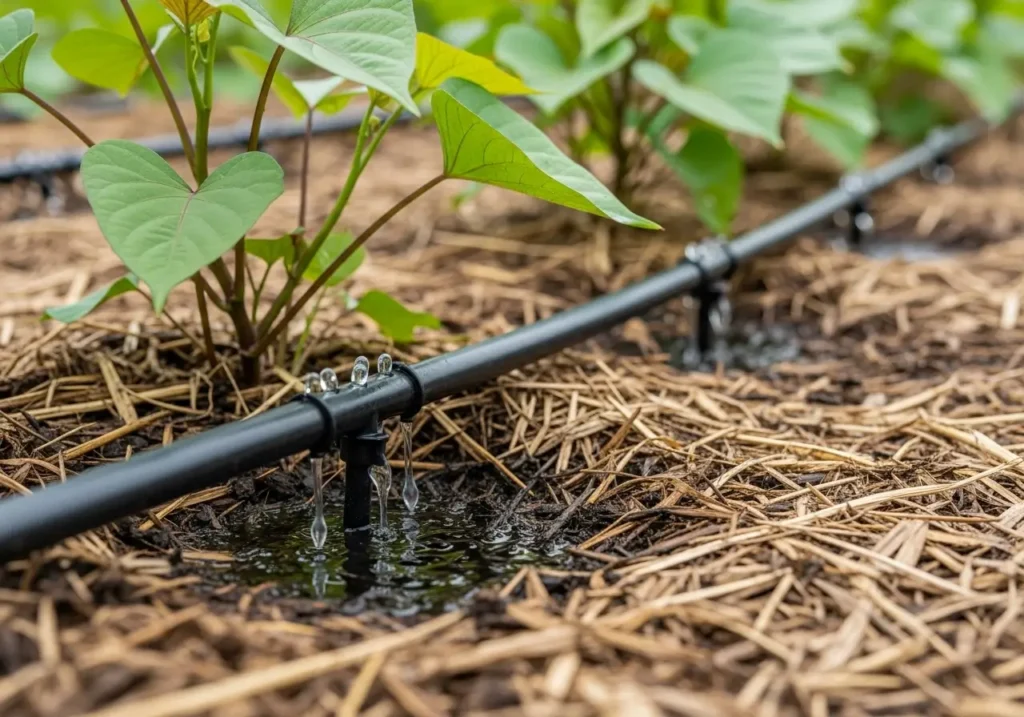
My setup is nothing fancy—I’m not talking about some high-tech NASA system here. Just a basic timer, some drip tubing, and emitters every foot or so. The timer goes off twice a week for 45 minutes each time, delivering about half an inch each session. Perfect.
The only thing you gotta watch out for is rain. I’ve got this super high-tech rain gauge (okay, it’s a coffee can with Sharpie marks), and I adjust my timer when Mother Nature does her thing. No point in watering right after a good storm!
Sweet Potato Drought Tolerance: More Resilient Than You Think
Here’s something that totally blew my mind about sweet potatoes—they’re basically the survivors of the plant world. It is way tougher than most of us give them credit for.
Remember that brutal summer of 2022? We’re talking weeks without decent rain, temps in the 90s every day, and my poor tomatoes looking like they were ready to throw in the towel. But my sweet potatoes? They just kept on keeping on with barely any help from me.
The secret is their root system—it’s like they’ve got their own underground water-finding network. Once they’re established, they can tap into moisture way down deep that other plants can’t even reach. It’s pretty amazing when you think about it.
But—and this is super important—they’ve gotta get established first. You can’t just plunk down some slips and then disappear for weeks. They need that early TLC to build up their drought-fighting superpowers.
Here’s a bonus: plants that go through a bit of water stress taste better! Something about it concentrates the natural sugars. It’s like the plant version of “what doesn’t kill you makes you stronger.”
The Dangers of Overwatering Sweet Potatoes
Oh man, guilty as charged on this one. If you’re a recovering helicopter plant parent like me, listen up.
Overwatering sweet potatoes is actually worse than underwatering them. I learned this hard in year three when I was determined to have the most epic harvest ever. I watered every single day, sometimes twice when it was hot. I was like the overeager plant mom who won’t let her kids figure things out independently.
The result? Absolutely gorgeous jungle-like vines that looked like they belonged in some tropical paradise… and tubers that were either teeny-tiny, split open, or straight-up rotten. Here’s what too much love does to sweet potatoes:
Root rot city: Constantly soggy soil is like a VIP invitation for all the nasty fungi that love to attack roots and developing tubers.
All show, no grow: Too much water tells the plant to put all its energy into making pretty leaves instead of storing energy in those underground treasures we want.
Pest party central: Wet conditions are like rolling out the red carpet for slugs, snails, and other creepy crawlies that’ll munch on your plants.
Crack attack: When soil goes from super wet to kinda dry and back again, it makes the tubers crack and split, which basically ruins them for storage.
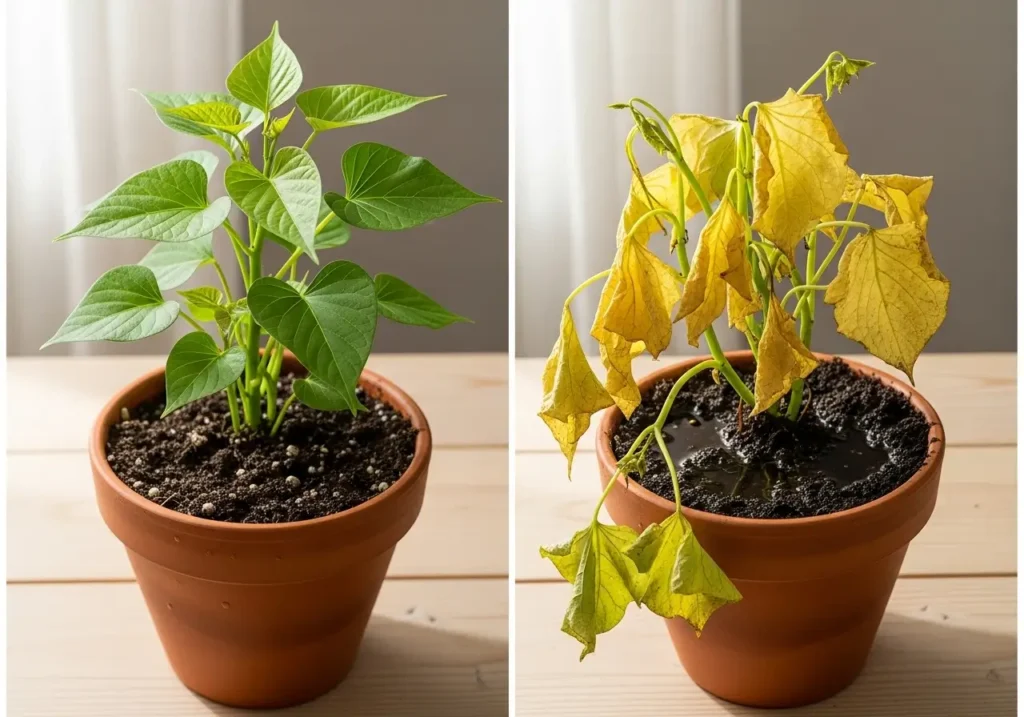
Red flags I learned to watch for:
- Leaves are turning yellow from the bottom up
- Weird, musty smell hanging around the plants
- Soft, squishy spots on the vines
- Plants that just aren’t thriving despite perfect conditions
- Fuzzy stuff growing on the soil surface
Seasonal Watering Adjustments: Working with Mother Nature
Living here in Zone 5b has taught me that you gotta roll with the punches when it comes to watering. What works great in June might be totally wrong for August, and what’s perfect during a muggy summer could be a disaster when it’s dry as a bone.
Spring (Planting Time)
When I get my slips in the ground in late May, the soil’s usually still holding onto that spring moisture, but things are warming up. This is when I’m like a new plant parent—checking on them constantly and ensuring they’ve got steady moisture while figuring out their new home.
Early Summer (June-July)
Prime time growing season, and usually when we get those awesome afternoon thunderstorms. I often water myself less than my schedule says because nature’s doing the work for me. Always do the finger test before you water—don’t just go by the calendar!
Late Summer (August-September)
Hot, dry, and when I stick closest to my established routine. Pro tip: water in the early morning to avoid shocking the plants when it’s blazing hot later.
Fall (Pre-Harvest)
As things cool down and the days get shorter, I back way off on watering. The plants are naturally slowing down, and the tubers are finishing their things. Less is definitely more here.
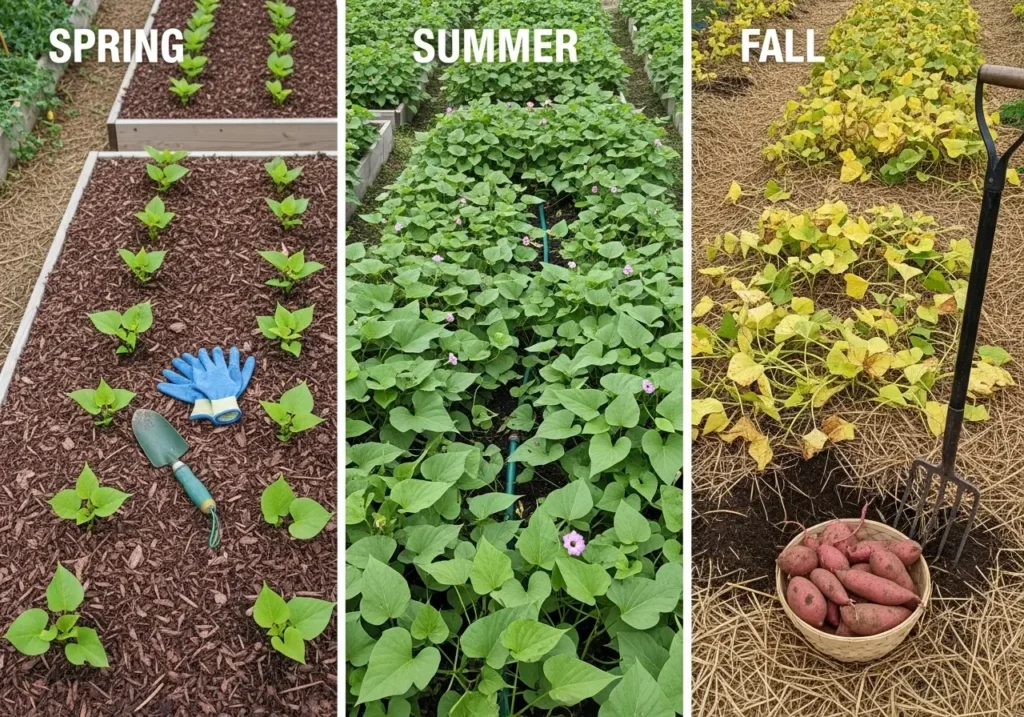
Soil Considerations: The Foundation of Good Watering
You can’t talk about watering without talking about soil—they’re like best friends who do everything together. Sweet potatoes need soil that drains well but still holds onto some moisture. Think of it like a good sponge, not a brick or a bucket.
I fought with heavy clay soil for years in part of my garden before I finally got smart and fixed it properly. Now I always tell people to start with reasonable sweet potato soil requirements because the right soil makes everything much easier.
The perfect sweet potato soil drains well enough that water doesn’t just sit there making puddles, but has enough good organic stuff to hold moisture between waterings. I add compost and aged manure every spring, and it’s made such a massive difference in drainage and water retention.
If you’re growing in raised beds, you’re totally winning at life. The drainage is automatically better, so it’s much harder to overwater, plus you can control exactly what kind of soil you’re working with. Honestly, I’m jealous of people who start with raised beds—would’ve saved me so many headaches!
Container Growing: Special Watering Considerations
Growing sweet potatoes in pots is a whole different ball game when it comes to watering. The first time I tried it, I treated them exactly like my ground plants. I ended up with what basically looked like sweet potato jerky. Not cute.
Containers dry out way faster, especially during those brutal summer days. For container sweet potatoes, I’m out there almost every day during peak summer, checking on them, sometimes watering twice a day if they’re in smaller pots. The trick is that finger test—stick it down into the soil about 2 inches. Dry? Time to water.
I’ve learned that bigger containers (at least 20 gallons—yeah, they’re huge) work way better than smaller ones. They don’t dry out as fast and give the tubers more room to do their thing. Smaller containers are just too much work and usually give you disappointing results.
Troubleshooting Common Watering Problems
Wilting Even Though the Soil’s Wet
This usually means root trouble, often from too much water. Dig around gently and check the roots—they should be white or cream colored, not brown or black and mushy.
Super Slow Growth
It could be that there is not enough water when they’re getting established, or ironically, too much water later on. Check what growth stage you’re in and adjust accordingly.
Cracked Tubers
This happens when water’s all over the place—bone dry one day, swimming the next. Consistency is key to preventing this.
Tiny Tubers But Gorgeous Vines
Usually means too much water late in the season. Those beautiful vines might look amazing, but they’re putting all their energy into leaves instead of the underground goodies we want.
Final Thoughts: Trust the Process (and Your Plants)
After all these years of growing sweet potatoes, the biggest thing I’ve learned is to chill out and trust both the process and what my plants are telling me. Every garden’s different, and every year brings new curveballs. What works like magic one season might need tweaking the next.
This watering schedule I’ve shared? It’s my starting point based on years of mistakes and victories, but you’ll need to adapt it to your situation. Pay attention to your soil, local weather, and most importantly, how your plants respond.
Here’s the thing—sweet potatoes actually want to succeed. They’re not trying to be complicated or mysterious. They need consistent care when they’re babies, then a more hands-off approach as they grow up. Once you get the hang of it, you’ll wonder why you ever stressed about it.
For the full scoop on everything sweet potato, definitely check out my complete guide on how to grow sweet potatoes—it’s got everything from planting to that magical harvest day.
So what’s your sweet potato watering story? Have you made any epic mistakes or discovered any cool tricks? Drop a comment and let’s chat about it—that makes this gardening thing so fun!
Sweet Potato Watering Schedule Frequently Asked Questions
How often should I water my sweet potatoes?
Sweet potato watering frequency depends on the growth stage. Water every 2-3 days during the first 3 weeks (establishment phase), twice per week during weeks 4-8 (vine development), once weekly during weeks 9-12 (tuber formation), and minimize watering 3-4 weeks before harvest to concentrate sugars in the tubers.
How much water do sweet potatoes need per week?
Sweet potatoes need about 1 to 1.5 inches of water per week, including rainfall. This should be delivered through deep, infrequent watering sessions rather than daily light watering. Use the finger test – stick your finger 2 inches into the soil, and if it’s dry, it’s time to water.
What happens if I overwater my sweet potatoes?
Overwatering sweet potatoes causes more problems than underwatering. Too much water leads to root rot, yellowing leaves, poor tuber development, and increased pest problems. Overwatered plants focus energy on foliage growth instead of developing the tubers you want to harvest.
Can I use drip irrigation for sweet potatoes?
Yes, drip irrigation is excellent for sweet potatoes. It delivers water directly to the root zone, uses 30-50% less water than sprinkler systems, keeps foliage dry to prevent disease, and provides consistent moisture without overwatering. Set up emitters every 12 inches and run the system twice weekly for 45 minutes during peak growing season.
